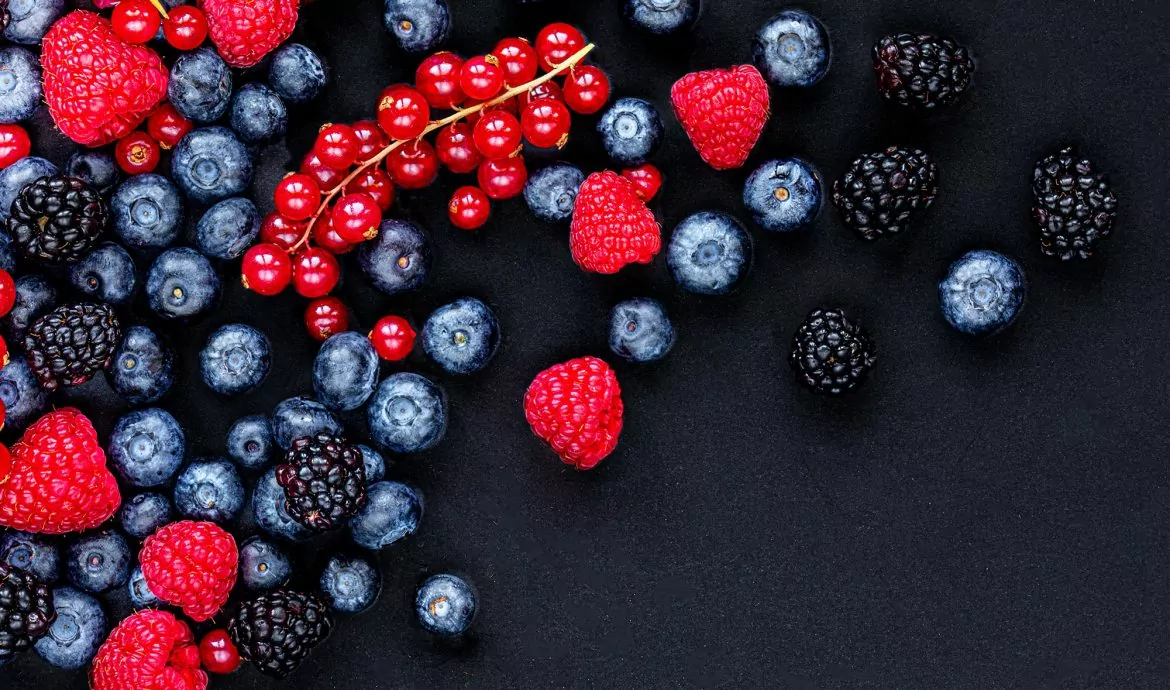In the world of fruits, the variety is endless. Acid, sweet, soft, or juicy, there are so many flavors and textures for every kind of preference. But it’s the berries, especially the exotic berries, that are praised for their health benefits. Many of them are full of vitamins and antioxidants, which also give the immune system a boost.
But what characteristics should they have to be considered a berry and or an exotic fruit? We have all the answers here.
What is a berry?
Did you know strawberries and blackberries are not true berries? But bananas and grapes are? “People think of berries as small, squishy fruits (…), but the scientific classification is far more complex,” says Judy Jernstedt, professor of plant sciences at the University of California (Live Science, 2017).
In botany, a berry has three layers:
- The outer skin is called the exocarp.
- The fleshy middle is called the mesocarp.
- The inner part that holds the seeds is called the endocarp.
They also need to have more than one seed. Hence, a cherry doesn’t make the cut. However, as we mentioned before, bananas and grapes do. Fruit classification can be chaotic, even for scientists. For now, we are going to focus on exotic berries, that indeed belong to this category.
Exotic berries: What makes them exotic?
Exotic products, by definition, are hardly found in regular markets, because they are usually grown in remote areas. They also tend to be scarce and pricey for the following reasons:
- Most exotic berries have tropical origins, so they are sensitive to refrigeration. Fruit preservation here is a big challenge, in the attempt to extend their shelf-life.
- The regions tend to be far away from consumer centers. And since they have a short life span, air shipping is sometimes the only way, adding an extra cost to the production line.
- When we say tropical zones, we are talking about deep in the rainforest. So, for the exotic berries to get to your fridge, they need a pest treatment before shipping.

Some exotic berries you need to try
Cape Gooseberries
- This golden-colored fruit is sweet like a pineapple. You can eat them raw, perhaps in a salad. Or you can cook them.
- As a result of their antioxidant content, they help reduce inflammation and strengthen the immune system.
- They grow in warm regions in South Africa, South America, Central America, India, and China.
Açai
- It has an earthy taste, often described as a mix of blackberries and unsweetened chocolate.
- The number of vitamins, minerals, and antioxidants give it the superfood status.
- This berry is commonly found as a powder or fruit puree since it’s hard to find fresh.
- It has been a food staple for native Amazon tribes for centuries. (Healthline, 2017).
Blueberries
- They are high in vitamin C and K, fiber, and antioxidants, and low in fat.
- The pigment in the blueberries (anthocyanins) helps to keep good eye health.
- This berry is native to North America, some parts of Asia, and Scandinavia.
Camu Camu
- This berry tastes a little bit tart when eaten raw. That’s why is also used as powder or fruit puree in ice creams, juices, and yogurts.
- Regular consumption of Camu Camu juice lowers oxidative stress. (Healthline, 2017).
- It grows in the Amazon rainforests of Colombia, Brazil, and Peru.
Exotic berries are living proof that healthy products are also very tasty. Be aware of food certifications like the organic kind to get the best out of these superfoods.
References
BUETTNER, K. (2017, NOVEMBER 10). 9 NUTRITIOUS EXOTIC FRUITS WORTH TRAVELING FOR. HEALTHLINE.
RETRIEVED FROM HERE
GEGGEL, L. (2017, JANUARY 12). WHY ARE BANANAS BERRIES, BUT STRAWBERRIES AREN’T?. LIVE SCIENCE.
RETRIEVED FROM HERE
LEAFY PLACE. (N.D.) 23 TYPES OF BERRIES: LIST OF BERRIES WITH THEIR PICTURE AND NAME.
RETRIEVED FROM HERE
TAYLOR, S. (2019, MAY 13) WHAT IS AN EXOTIC FRUIT? INDOOR GARDEN NOOK.
RETRIEVED FROM HERE




















